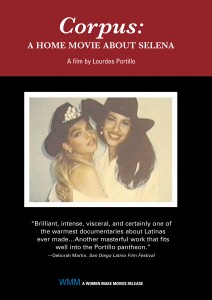In CORPUS: A Home Movie for Selena, Lourdes Portillo explores the rising career, untimely death and lasting legacy of Tejana-Pop crossover sensation, Selena Quintanilla. Through interviews with family members, interactions with fans, a facilitated discussion among Latina intellectuals and home-video, Portillo creates a tapestry of Selena, the Latina and Selena, the phenomenon. There are incredibly touching scenes of never-before-seen home video of the iconic Quintanilla family as well as insightful, if not devastating interviews with Selena’s father and big sister. The heart of this documentary, though, is the collection of moments with fans Portillo captures across Selena’s hometown of Corpus Christi, Texas. Notable highlights include a moment with a devoted older Latina fan who comes to clean Selena’s tombstone every morning, a moment where aspiring young Latina girls express their connection to the late superstar through performances, and a controversial scene depicting a drag queen performing as Selena.
The piece was created for a PBS docuseries called POV in 1999 and from its release, created plenty of criticism from the Quintanilla family, but was generally well-received by the Chicano community as a work that captured what Selena meant to an often overlooked community. The piece also features excerpts from a discussion of leading Latina “intellectuals” including acclaimed author, Sandra Cisneros, who notably (and controversially) criticizes the broader message that Selena sends to young Chicanas. Though the piece has its faults, it excels at starting a conversation around Selena, who, 25 years after her death, remains a giant in Chicanx culture and does so with a uniquely Brown and uniquely feminist lens.
For more on Selena’s legacy in the Chicanx community, read Deborah Paredez’s Selenidad: Selena Latinos and the Performance of Memory
(Jonathan Galvan ’21)




